Fabrice Fouillet is a Parisian photographer who specialises in architectural and still life photography. He had previously studied Sociology and Ethnology in university and went on to pursue photography at The Gobelins School in Paris. His photographic works aim to “explore the notion of identity and the close relationship of men with their environment.” He also gained recognition for his series “Corpus Christi” which featured new places of worship and won the Sony Awards in the “Architecture” category.
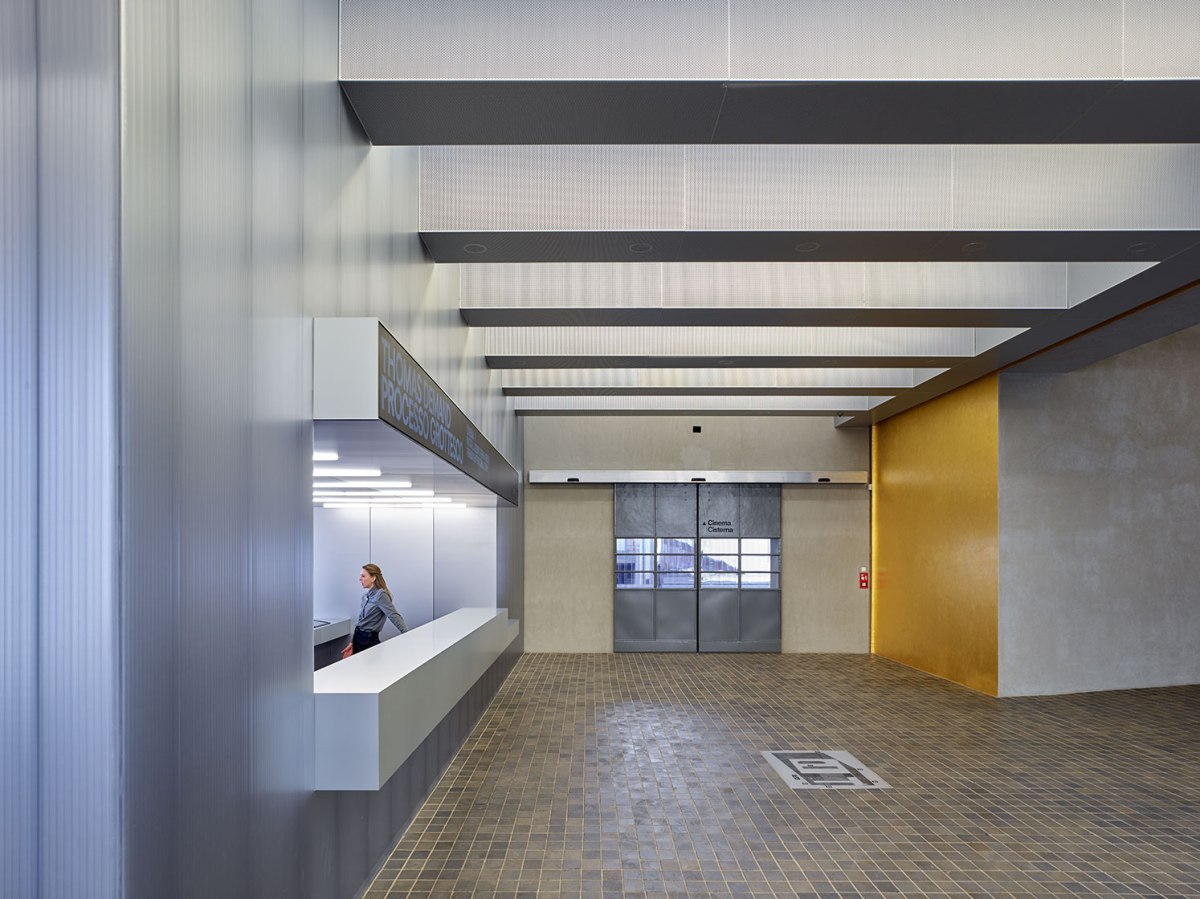
I really admire Fouillet’s sense of aesthetic and his love of clean lines, which appeals to my love for order and structure. In this image, strong lines dominate while the yellow wall and the lady give somewhat of a pop or a break from the lines, making the overall visual more interesting. While it is mostly ambient lighting for the foreground, the background in this image is coincidentally framed by the clear sections of the door and lit by natural lighting. I think it is pretty clever of Fouillet to recognise this contrast and use it to demonstrate the building and its surrounding environment.
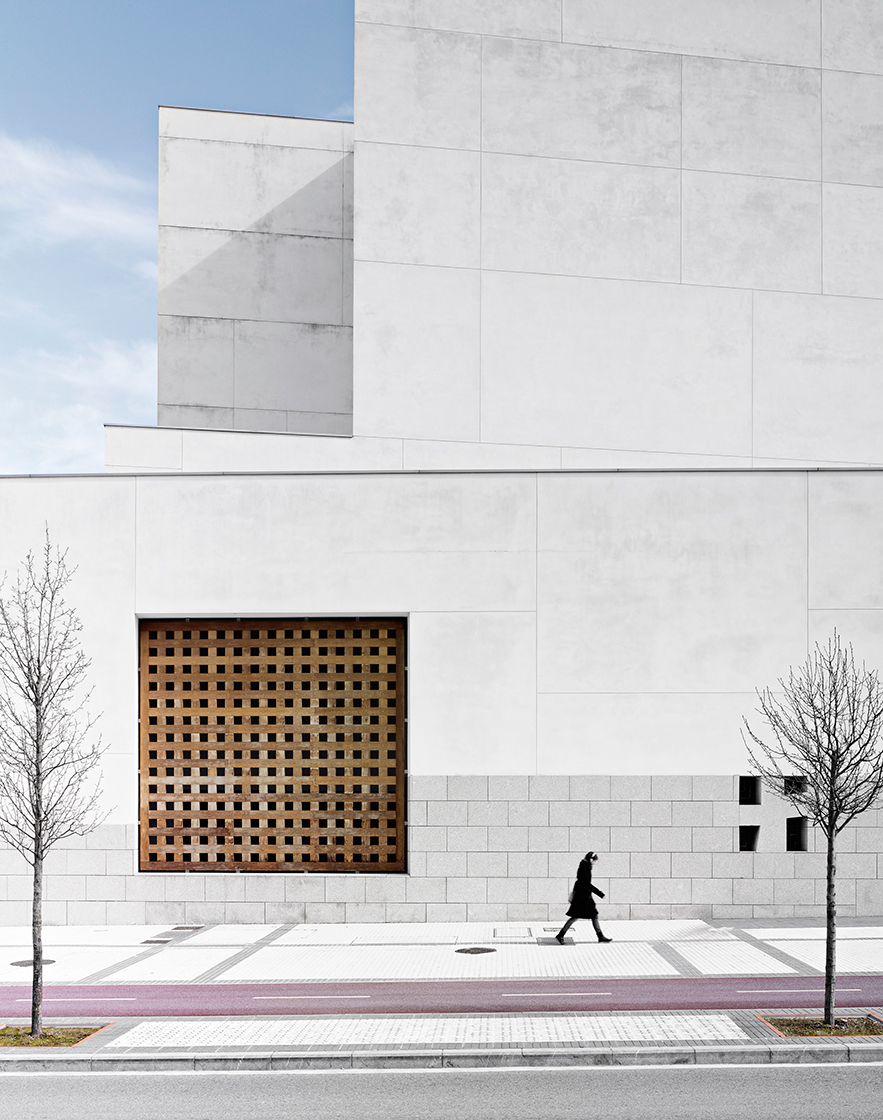
For me, the composition and lighting of this photo are really a marvel to look at – the towering building over the small lady, the well-placed elements of the lady and the checkered wall between the two trees. It gives off such a wintry and lonely vibe that you have to admire the clean aesthetics here. The slight pop of colour coming from the light red pavement and the wooden checkered wall also works well at capturing the audience’s attention. While the shadow on the top building may look hard, the overall tone of the building feels soft, light and contemporary.
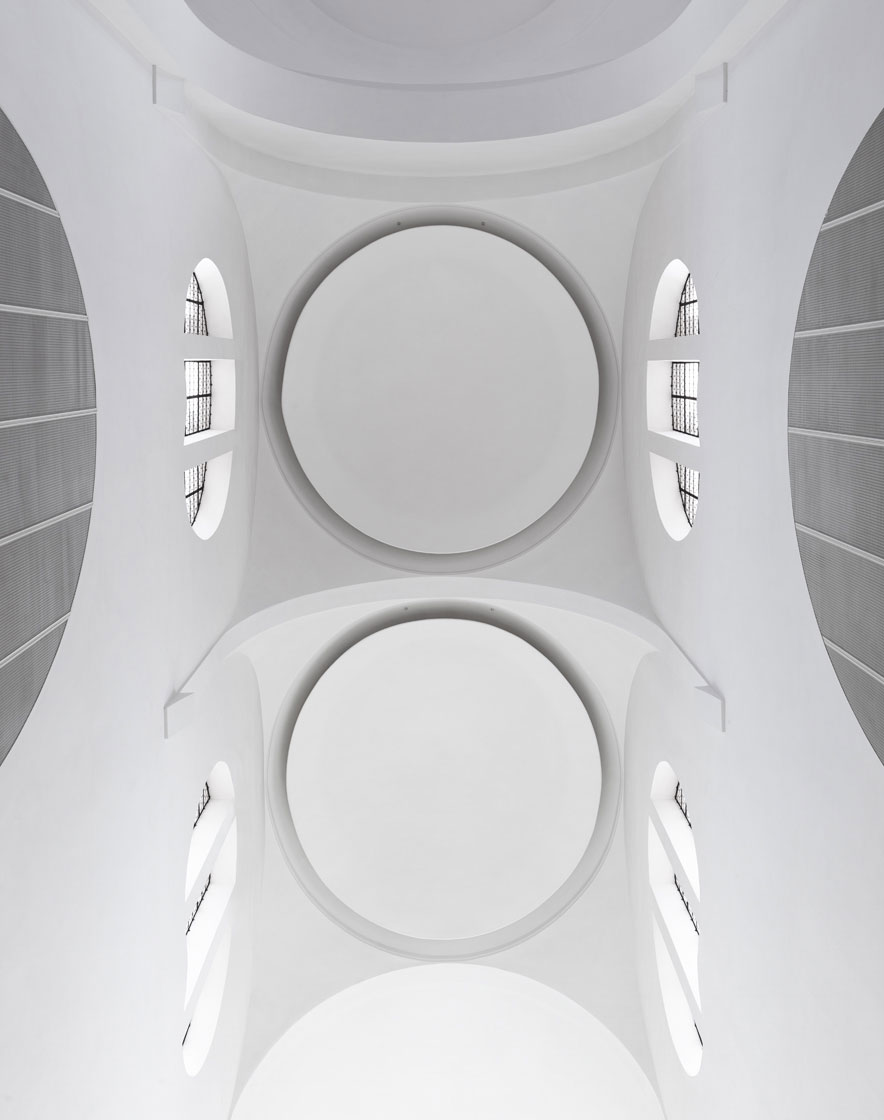
This was probably taken by Fouillet looking up at the ceiling of a church and I think it’s amazing he has captured such details, even when the colours are mostly white and grey. The sense of symmetry is very strong here, especially with the curves and lines dominating the visual. The light in this photo looks rather flat, which lends well to having little shadows and emphasising the architectural lines of the ceiling. Viewed longer, this photo takes on an graphical likeness that is almost akin to abstract art.
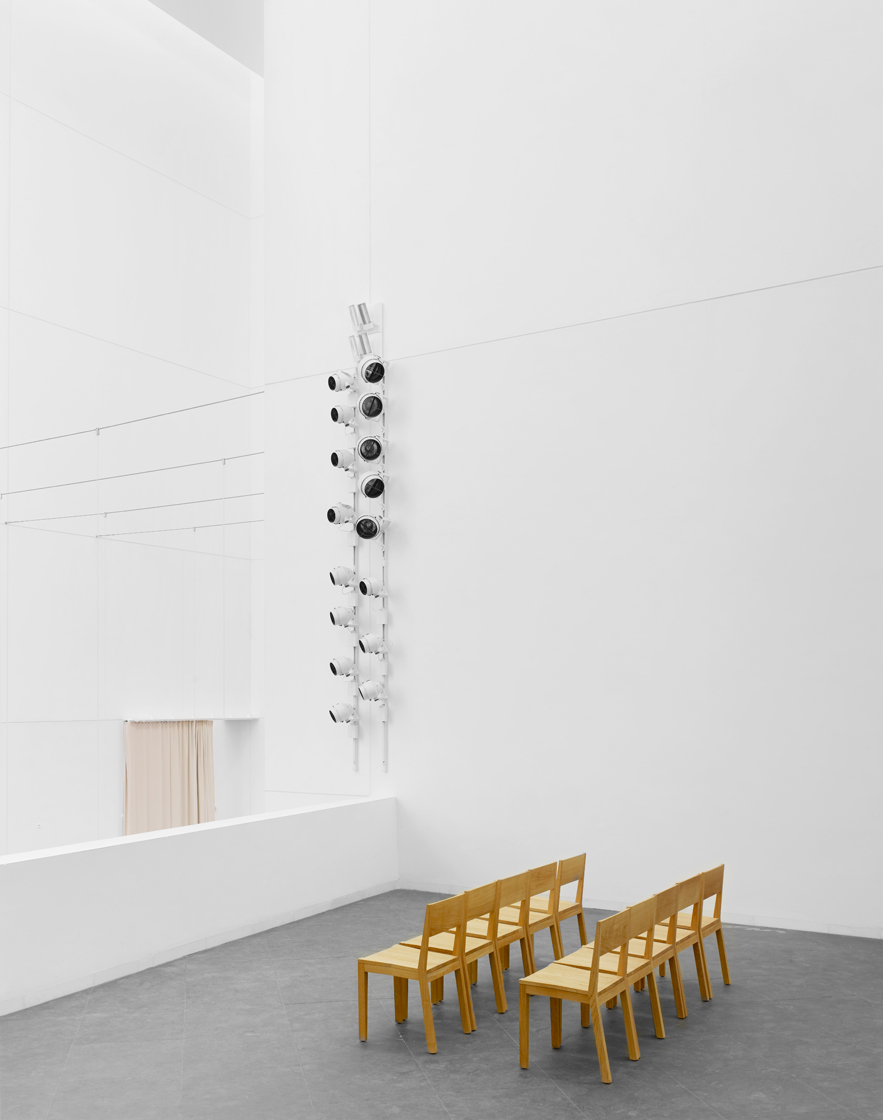
Fouillet framed this photo such that the composition has the chairs and the lights (?) as the main elements. This strong focus on both subjects, together with the dominant whites, provide a visually appealing image, from the stark whites to the patterns of the arranged chairs. The white is so domineering here that the wall almost looks like a flat one, when actually there are more layers, as evidenced by the pipes and the shorter white wall on the left. I feel like there could be a hidden story here, filled with a sense of anticipation from the waiting chairs and a pseudo-curtain (?) yet to be drawn.

What grabbed my attention in this photo was the overwhelming size of the building’s architecture, almost swallowing whole the man in the middle. I think this image really brings out Fouillet’s theme of exploring how man and architecture relate to each other. The lines of the building are such a strong element in this visual and they provide somewhat of a leading albeit wavy line to the lone man. The ‘clean’ quality is visually everywhere – the lines of the building, the architectural outlines, the whites, the black attire of the lone man – that it is hard not to have a second look at this photo.
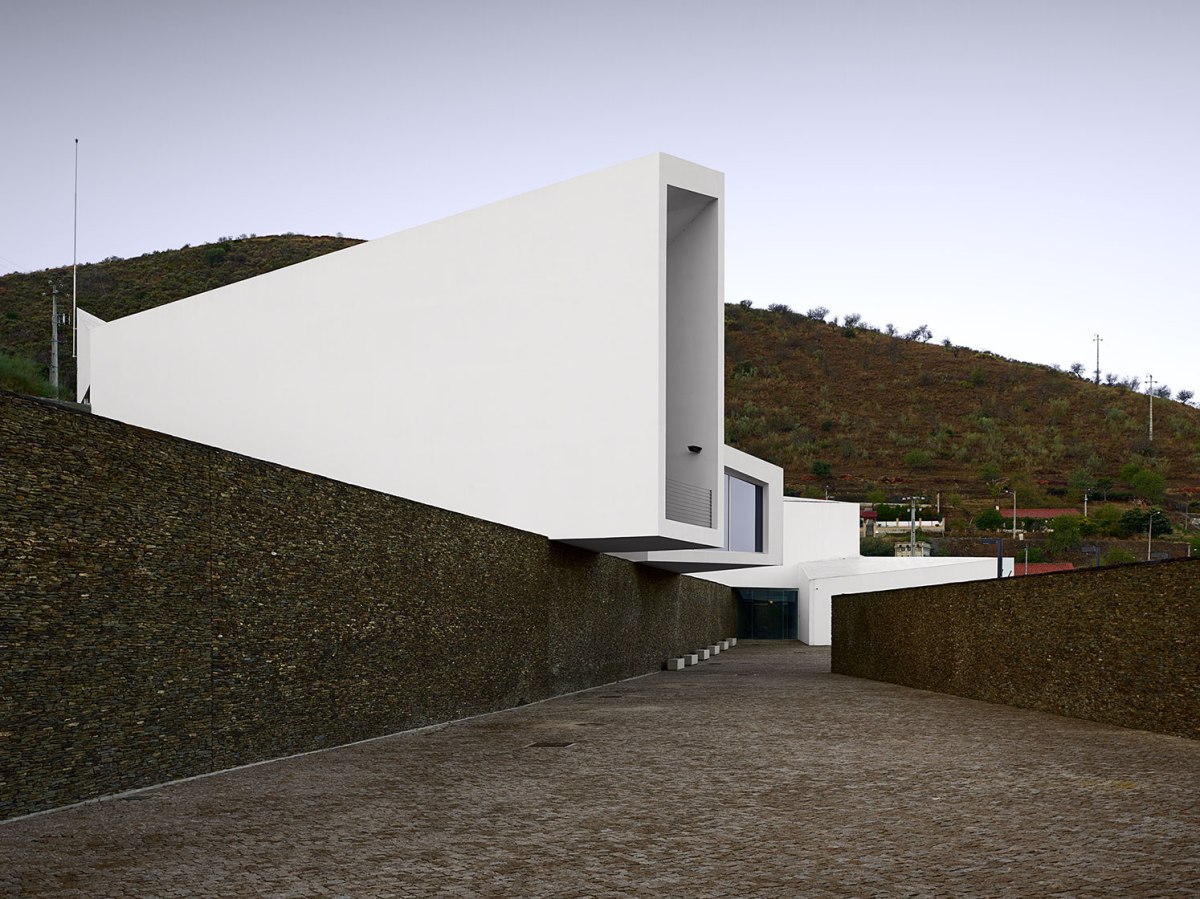
In this photo, I feel there is an otherworldly feel to it, making one wonder where exactly this was taken at. The white structures look both flat and dimensional at the same time, with the hill behind giving little clue to its location. Do people make their homes in them, or are they simply monuments to be admired only? The architectural lines work well with the walkway’s lines, providing symmetry and balance to the photo.
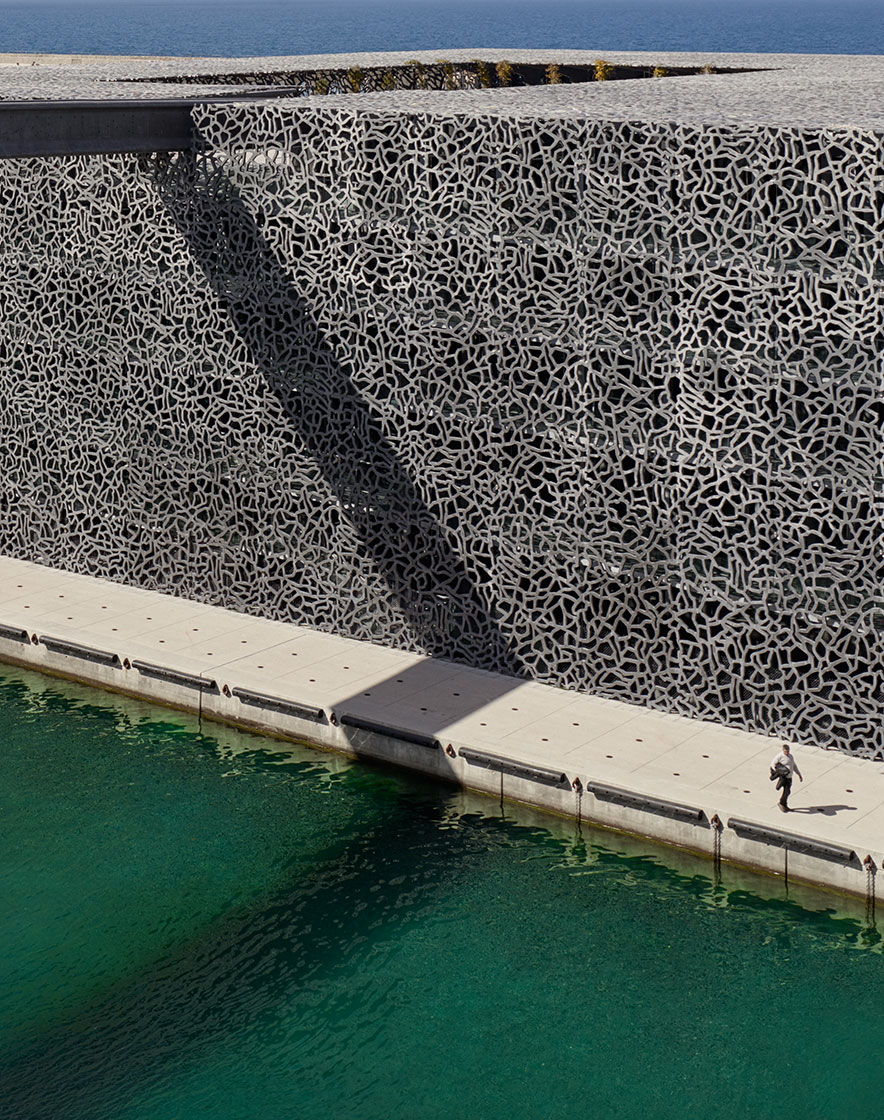
Fouillet plays with the light and shadows shrewdly here, making zig-zag lines with the cast shadow, as if to contrast them with the free form lines of the building and the lines along the walkway. The staggering size of the building is intimated by the mere size of the walking man in comparison. Again, Fouillet’s strong eye for lines and patterns shines through here to create a compelling image.
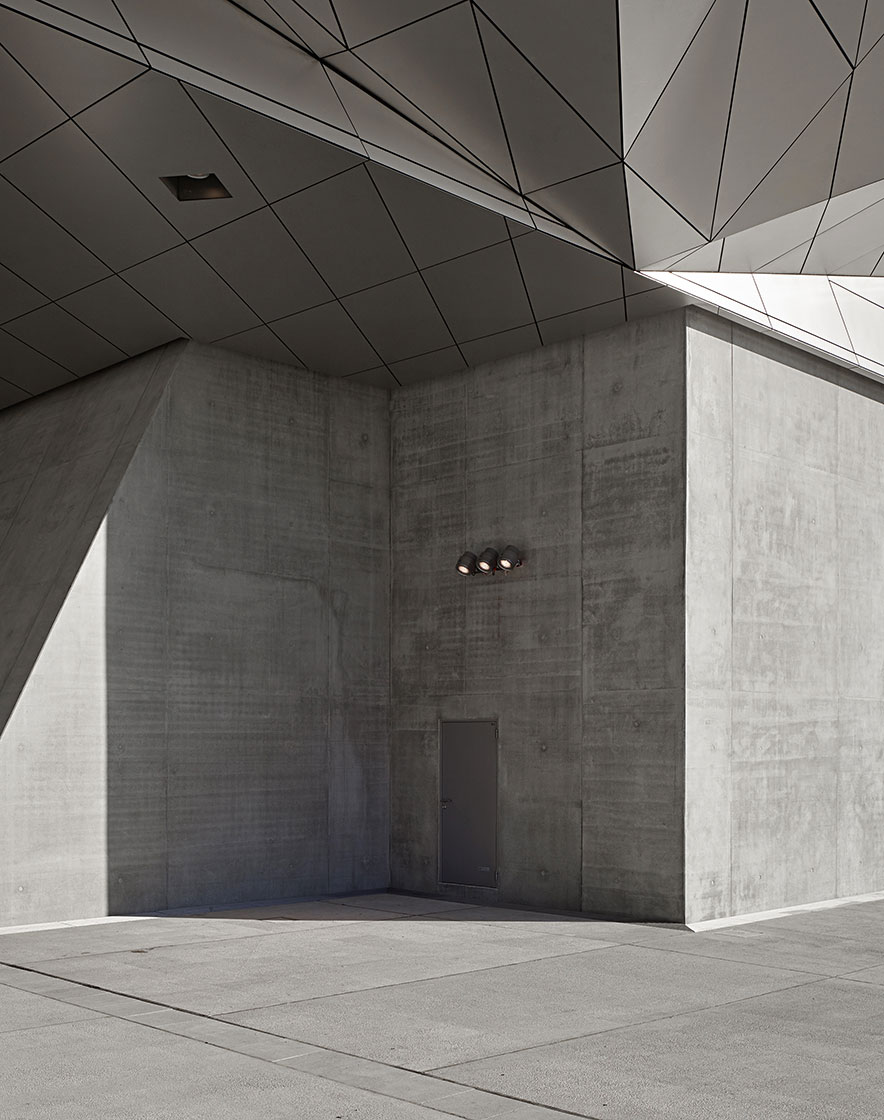
Another quality I like about Fouillet is how he makes the ordinary and mundane appear visually curious and intriguing. This photo is a good example of that – a corner of a building with the door in the hard shadow. His sense of composition also plays well here, making sure the area of the cast shadow is proportionate to the other lit areas. While the combination of lines – from the top of the image to the architectural form lines, from the lines of the shadow to the lines on the walkway – may seem rigid and unbending to some, I actually find it soothing to admire these lines and the beauty of its order.
All images copyright of Fabrice Fouillet.